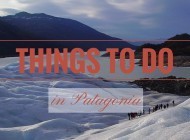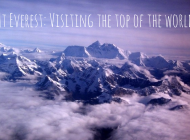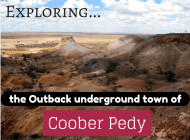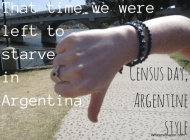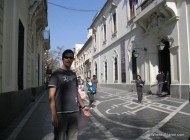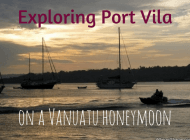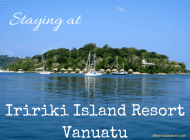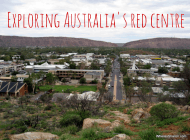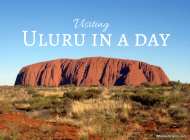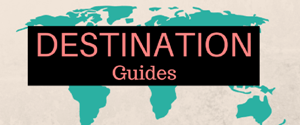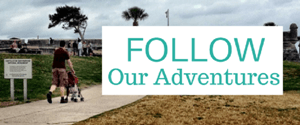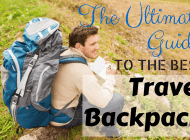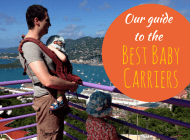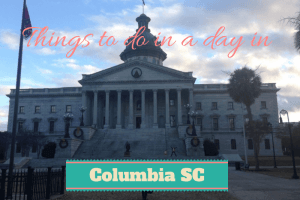The Pantanal is one of the world’s largest wetlands areas. For me, the name evokes mystery and wonder.
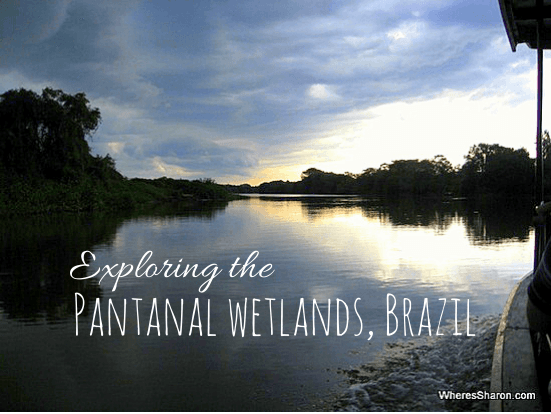
Located in Brazil, it was obvious that we were going somewhere quite different the closer we got to the Pantanal wetlands on our tour. The landscape changed the closer we were. Not dramatically at first, but the further we went the more it was clear that we were entering a completely different area. Initially, it was obviously flatter with a lot more trees, then came the water; puddles, streams, swamps, bridges. It was clear it was like nothing else we’d seen on this trip.
This post is partly written by J, and partly written by Sharon.
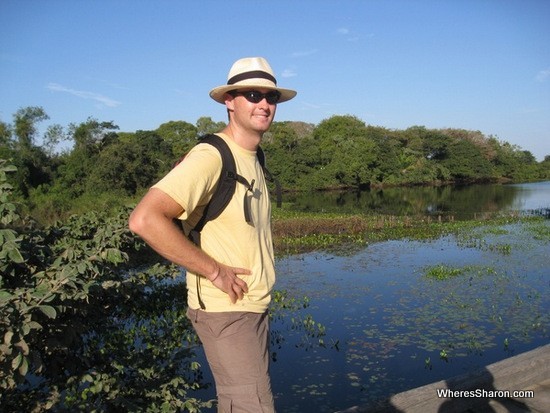
Part of the beautiful Pantanal
Contents
The Pantanal
Joshua
The Pantanal wetlands are indeed a unique environment. Recognised by UNESCO as a World Biosphere Reserve, it is the world’s largest wetland. Bordered on three sides by mountain ranges and with several major rivers, including the Paraguai, flowing it through it, the Pantanal floods every year, becoming like one large lake with islands where the region’s animals congregate while they wait it out. The regular flooding restricts the land’s use for anything but low level farming and so the area has become a massive natural reserve: 242 species of fish, 670 bird species, 110 mammals and 50 types of reptiles, along with 1,500 species of flora call the Pantanal wetlands home.
We came to the Pantanal because of a book. John Grisham’s The Client, to be exact, which is partly set there. Sharon in particular had been fascinated by the description of the Pantanal wetlands in flood (which happens from October to April) and had began looking up tours of the region, all of which had proved either basic (tent style basic), expensive or both. So when she saw the tour we are now on included a quality 3-day excursion to the region it was always going to be hard to turn it down.
Day one in the Pantanal wetlands – boat rides and wildlife
Our base for exploring the Pantanal wetlands was Passo do Lontro, a set of dorms and rooms built on stilts on the banks of one of the larger rivers, the Rio do Miranda. The tour was meant to be allocated basic four to a room accommodation with shared bathrooms, but as luck would have it we were upgraded to the ‘Chalets’ which gave us our own rooms. It was a nice surprise. However it wasn’t long before we were on our first activity, a boat ride down the river, with our guide, Alex, a Pantanal native.
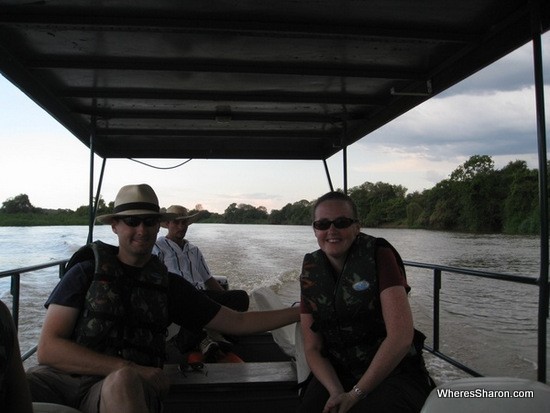
On the boat cruise down the Rio do Miranda
When in flood, a boat trip in the Pantanal wetlands is meant to be a great experience, but we hoped it would prove to be a rewarding one at this time of year. The skies were a menacing gray when we set off, which wasn’t good, and it began to rain on and off soon after. Still, this didn’t stop us seeing the rich fauna of the region.
The first animals we saw were caimans. Caimans are related to crocodiles and look a bit like them except for they are smaller and black. They look menacing – lurking under the water except for their snouts poking out. They tended to run and hide when we stopped to get close. I am not sure I would have wanted to get much closer.
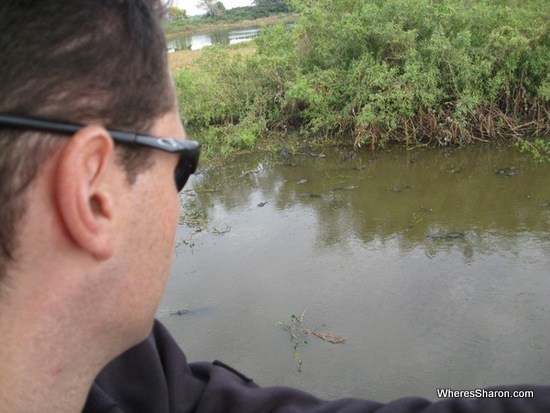
A pack of lurking caimans
Despite not being the amazing landscape of the flood season, it was still interesting to go down the river. The river was lined with reeds and marshes on either side. There were lots of trees that grew on the embankments and the higher ground. It was all very green.
Not surprising, there were lots of birds (who were hard to photograph in the poor light). Each time Alex saw something of interest he’d stop the boat and point it out. The largest of them all, and the symbol of the Pantanal wetlands, is the white and black Jabarou Storks, but we saw Herron, kingfishers, several types of hawks and Caribou. The storks in particular were impressive. However, the rain made it hard to see anything so after a bit more than an hour we had to turn around and head back for camp.
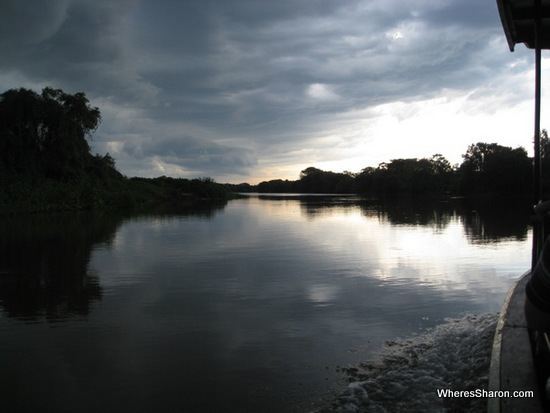
Leaden skies over the Rio do Miranda
The wildlife followed us back to camp. Sitting near the walkway when we got back was a large caiman. Lying in the grass it seemed almost fake, it didn’t move and it didn’t blink. It was cool to think we slept surrounded by the wildlife.
Day two in the Pantanal – horse rides, farms and walking through swamps
The coolness was abruptly shattered the next morning when we were woken by the howls of a pack of howler monkeys. They started before six am. The trees surrounding our accommodation are home to a pack of the noisy buggers and they shouted to each other at far too loud a volume so early in the morning. I no longer wished to be surrounded by wildlife .
This did help us get ready in time for the departure to the Sao Joao farm. This farm is on part of the same property that Passo do Lontro is located and is the remnants of what was once an operating farm. We journeyed there in an open truck, so we could spot the many birds along the way, including some toucans with their bright yellow and orange beaks that stood out brightly as they flew through the sky. We also stopped by a section of wetlands that was chock full of caimans. There were a few people fishing off the bridge we’d stopped on, but every time they caught something a caiman would snatch it off the line.
At the farm they were saddling the horses for our first activity; a horse ride through the lowlands. Sharon was not too sure if she should go; she’d been allergic to horses with previous contact and so tried to see if standing near them triggered any reaction. Nothing happened. After a brief demonstration by Alex on how to ride and control the horses we saddled up and headed on out.
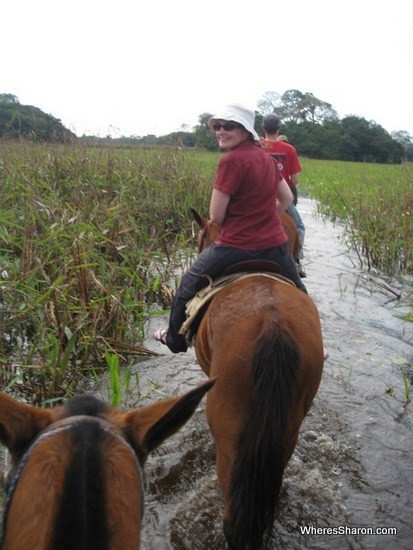
Giddyup! Sharon crosses the swamp
My horse wasn’t too compliant with my wishes at first, but it was happy enough to follow another horse as we formed a file and followed the trail. We didn’t get to see much in the way of fauna but it was a nice ride through over the soft and muddy ground. We rode through tall grass, clumps of trees on the patches of higher ground, mud, and some of the streams and ponds that were omnipresent. My horse did like the water, although had a predilection for stopping to eat reeds whenever it got there.
The ride lasted for an hour and a half. I quite enjoyed my ride but poor Sharon turned out to be allergic after all. She sneezed all the way through the ride. Despite really enjoying the ride by the time we were done the sun was beating down strongly, so it was good to be able to get under the shade and relax in some hammocks that had been set up for us while we waited for lunch.
After lunch we were supposed to do a tour by foot. But it was hot and so we got to have a post lunch siesta while we waited for it to cool down. Eventually, at 3pm we set off, led by Alex. As it would turn out, Alex enjoyed leading us through the water, although nothing too deep at first, just a little bit of water covering some oozing mud. Not that it needed to be deep, as Sharon almost lost one of her thongs after it got stuck to the mud. She had to cross the water barefoot, which made it feel all the worse.
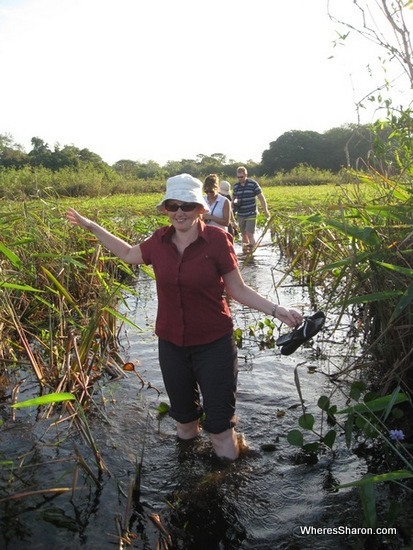
Sharon wades through the muddy waters
The open plains were easy to move about, but we went through lots of jungle like patches, where trees and low branches made it harder to move. These patches were the higher ground where trees could grow without being submerged come flood time. Animals took refuge here too, Alex said, like snakes and spiders, and the competition for space meant that many more animals would be killed off than would otherwise be the case. I was already not enjoying the overgrown bits with their vines and branches before being told they were a refuge for poisonous creatures.
Seeing the Pantanal wetlands on foot gave a different perspective. At times it felt like we could have been miles from any sort of civilization, if you ignore the high tension power lines that were at the edge of the property.
I was told the walk was only an hour. Although interesting (we got to see a few animals like caiman and bush pigs) I wasn’t enjoying it and kept glancing at my watch. Sharon certainly didn’t enjoy walking through the swamp bare foot. Just before the end, just for fun I suspect, Alex took us through nearly knee deep water, a prospect Sharon didn’t fancy. I was just happy to be heading back.
Just before the end, Alex showed us the fruit of a tree used by the Indians for dye. When the seeds of the fruit were crushed up and smeared on the skin it would dye the skin blue for a week. Not at first though, it took half an hour to come out, he said as he smeared us each. It didn’t really show up until the next day but the streak lasted awhile.
The first thing we did when we got back to camp was do our best to wash our feet. They were filthy. However it wasn’t until we got back to our rooms for a proper shower that we could finally get them clean.
Day three in the Pantanal wetlands – piranha fishing
Sharon
It was another night with quite a few wake ups as the monkeys and birds had their say. I was quite excited to go on our boat cruise and do some piranha fishing on this, our last full day in Brazil.
I have some vague recollection of seeing some horror movie when I was a kid where people were eaten alive by piranhas and have had a fear of them ever since. So taking some of them out of action had no moral dramas for me. I was also happy to go fishing again. I had only ever done it once before but I had enjoyed that. I liked the idea that we were going to be able to catch fish and then eat them ourselves afterwards.
We cruised up the river first, checking out wildlife along the way. I have been a bit disappointed by the lack of variety of wildlife we have seen in the Pantanal wetlands. We really haven’t seen many different creatures and not the big ones like jaguars or anacondas. I’ve seen more animals going bush walking in my home state of Tasmania.
Eventually our guide, Alex, stopped the boat and we got out and started fishing on the side of the river bank. It was a simple affair, just bamboo poles with fishing wire, a hook and some beef.
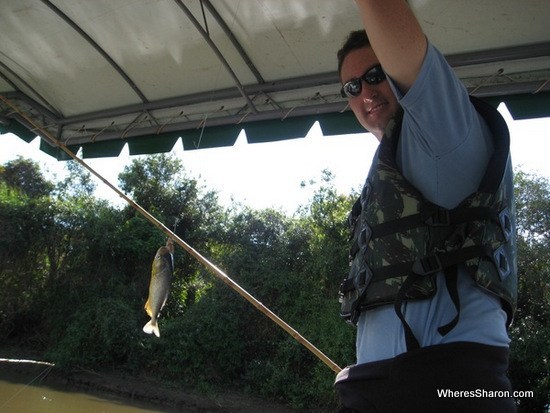
J catches another fish!
This is where my bad luck started. Unfortunately I had worn sandals and managed to stand on top of an ant nest. They were suddenly crawling all over my feet biting me. It stung and burnt so I moved to another spot where I managed to stand on top of another one! Eventually Alex found me a safe spot. During this time, one of our companions caught the first fish of the day.
After a while of only one more fish being caught, Alex decided we should get back in the boat and we tried fishing from the boat from various different spots. We caught a lot. I think everyone else caught at least three fish each except for me. We caught so many that we started throwing them back. I didn’t catch any despite fishing for longer than everyone else as they hoped I would get something. I was very disappointed.
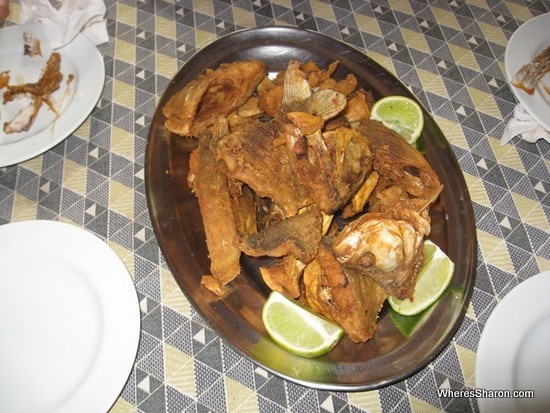
Mmm freshly caught piranhas
We got back to the lodge and got ready to leave while they fried up our fish, then we ate it. We had caught cat fish and piranhas and they tasted great.
With kids?
I think the Pantanal wetlands would be a great place to visit with kids. You could easily tailor your activities to their age and interests.
Our verdict?
I am not much of a nature person, it is fair to say, so it is hard for me to have sustained interest. For me, the Pantanal wetlands were interesting although I would have enjoyed it more in flood, when I think it would be really amazing. That said, it was good to see some of those magnificent birds up close, and the trip to the farm, especially the horse ride, was enjoyable for J. So interesting, but not fascinating, that’s how I’d sum it up.
Practical Information
Tour Accomodation: Passo do Lantro
Have you ever visited anywhere like the Pantanal wetlands?
Tags: Brazil Travel Blog Flashback Friday South America





